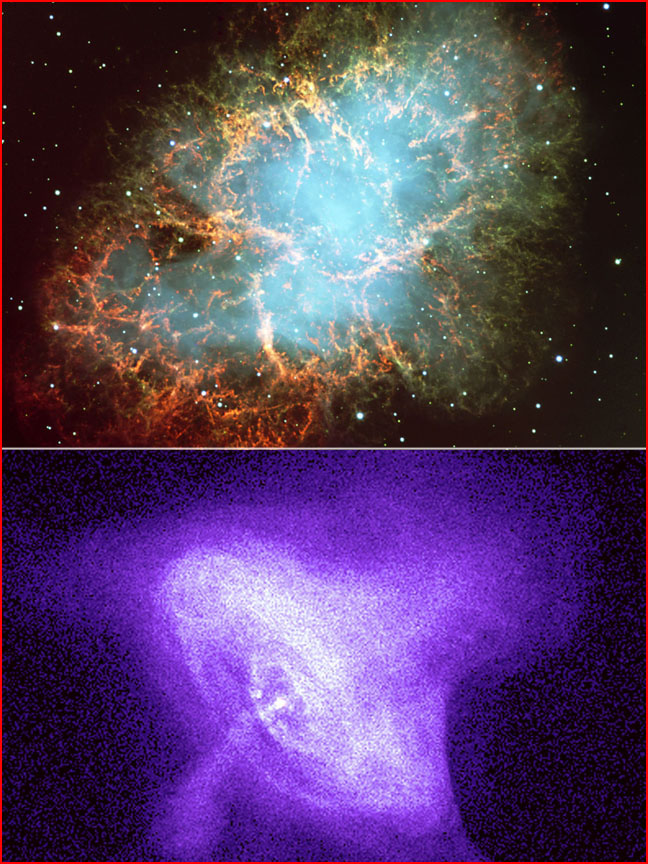|
|
||
 Credit (top): FORS Team, 8.2-meter VLT, ESO Credit (bottom): Chandra X-ray Observatory, NASA |
||
|
pic of the day Links:
Society for
|
Sep 16, 2004 On July 4, 1054 AD, Chinese chroniclers recorded an apparent supernova they called a "guest star" in the constellation Taurus, near the star Zeta Tauri. It was bright enough to be visible in daylight, but faded and disappeared again about a year later. In 1731 astronomer John Bevis discovered a bright nebula in the same location. When Charles Messier saw it in 1758, he first thought this "fuzzy object" might be a comet, but he found that it never moved. Using a larger telescope in 1844, Lord Ross thought the nebula resembled a crab's claw, and the description stuck. More than ten light years across, the Crab Nebula is now thought to be the remains of a star that exploded in 1054. Today's astronomical instruments see much more than Messier's fuzzy patch. They see filaments and complex structures, in colors and wavelengths that highlight newly discovered phenomena. For example, the star at the center of the nebula blinks 30 times a second. We now call such stars "pulsars". The high-resolution picture of the Crab Nebula above (upper), taken by the Very Large Telescope (VLT), shows the filamentation produced by magnetic fields and electric currents, as material races away from the nebula's core at half the speed of light--a "higher speed than expected from a free explosion", according to NASA reports. Acceleration of particles is a trademark of electrical activity, and no other force in space is known to achieve this feat. In the lower photograph taken by the Chandra X-Ray Telescope, we see the internal dynamics of the Crab Nebula, revealing structure typical of the intensely energetic activity observed in decades of laboratory experiments with electrical discharge in plasma. That these dynamics are revealed by x-rays is significant because x-ray activity always accompanies high-energy electrical interactions. The internal polar configuration is of particular interest. A torus or wheel-like structure revolves around an axial column--presenting what some have called a "doughnut on a stick". Polar columns or jets are expected in intense plasma discharge. In their discussion of the Crab Nebula, NASA spokesmen refer to "a scintillating halo, and an intense knot of emission dancing, sprite-like, above the pulsar's pole". Though gravitational theories never envisioned the polar "jets", "haloes", and "knots" of the Crab Nebula, we can now recognize these s as prime examples of electrical forces in the universe. |
|
|
Copyright 2004: thunderbolts.info |
||
